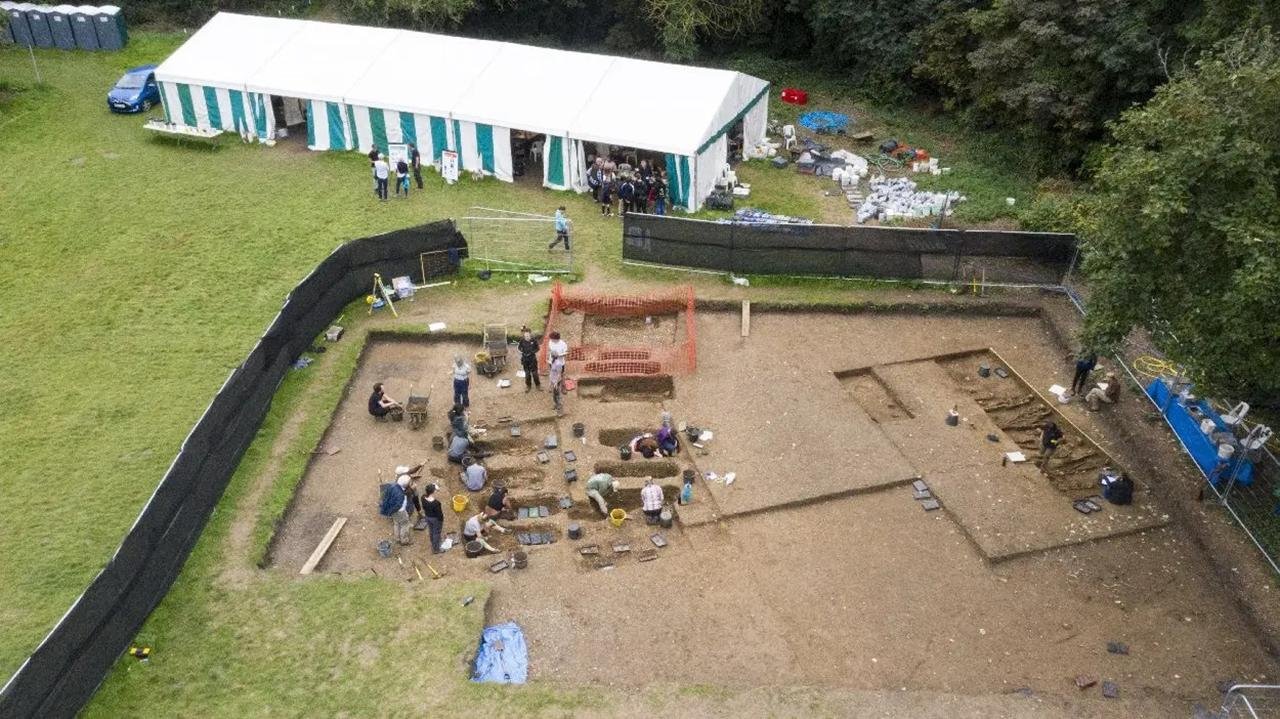Archaeologists from the University of Reading have been engaged in a series of excavations at Cookham Abbey, situated adjacent to the Holy Trinity Church in Cookham, England. These excavations have unveiled a wealth of discoveries shedding light on the mysteries of an Anglo-Saxon monastery known as Cookham Abbey.
 Credit: University of Reading
Credit: University of Reading
One of the most significant findings is a large timber structure within the monastery, which functioned as a central hub for both social and religious activities.
The excavation team has also unearthed a remarkable timber barrel-lined shaft, which contains various wooden artifacts. Additionally, the archaeological work has revealed a walled monastic enclosure that faces the River Thames, emphasizing the strategic location of the monastery. Alongside this, a cemetery containing over 50 burials spanning three generations has been discovered.
Cookham Abbey’s historical significance is traced back to the 8th century CE during the reign of Cynethryth, who later became Queen of Mercia. Following the death of her husband, King Offa, in CE 796, Cynethryth joined a religious order and eventually became the royal abbess of the monastery.
Professor Gabor Thomas, leading the excavation project at the University of Reading, shared his insights on these groundbreaking discoveries: “The discoveries we have made at Cookham will help us paint a much clearer picture of daily life at the monastery. We will need to carry out a more detailed analysis of what we have found, but the artifacts unearthed at this year’s dig again show the exceptional quality of preservation at Cookham.”
Previous excavations at Cookham Abbey have already provided valuable information about the layout of the wider complex. The site is organized into distinct functional zones, marked by ditched boundaries. One of these zones appears to have been used for housing, while another zone served for industrial activities, evidenced by a cluster of hearths likely used for metalworking.
The history of Cookham Abbey’s excavation is a relatively recent one, with the site first discovered in 2021 during a test excavation conducted by staff from the University of Reading’s Archaeology Department and volunteers from local archaeological societies. Subsequent full-scale excavations in the summer of 2022 uncovered an industrial and craft zone, which played a crucial role in supplying the nuns with food and facilitating the transportation of imported goods along the River Thames.
The excavations at Cookham Abbey are conducted with the kind permission of Holy Trinity Church Cookham. The University of Reading Department of Archaeology plans to return to the site for further excavations in 2024, promising even more revelations about the history and mysteries of Cookham Abbey.





